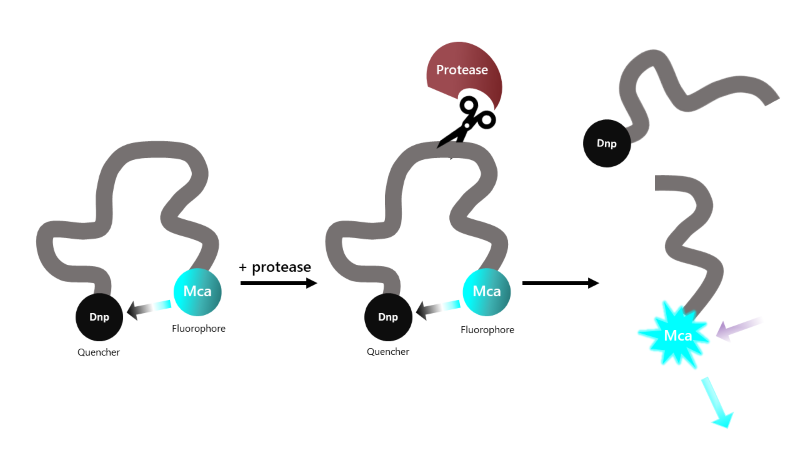Proteases
Proteases, also known as peptidases or proteinases, are enzymes that catalyze proteolysis by breaking down proteins into smaller polypeptides or single amino acids.
Proteases exist across all organisms, from viruses to mammals, and are involved in a myriad of biological pathways including protein catabolism and clearance by degradation, programmed cell death, protein activation from pro-proteins, extracellular matrix remodeling, and cell signaling. Proteases are classified based on their catalytic residues, such as serine, cysteine, aspartic, glutamic, and metalloproteases. A distinction is also made between an exopeptidase which cleaves a peptide from its end, and an endopeptidase which cleaves a peptide in its middle.

Proteases are valuable therapeutic targets, with viral proteases being targeted for viral control during an infection whereas metalloproteases and cathepsins are targeted for cancer treatment. Another example of a clinical target is β-Secretase1 (BACE1), which is a type I transmembrane aspartyl protease found in the brain, which plays a crucial role in the production of amyloid-β and is considered a promising therapeutic target for Alzheimer’s disease.
Protease Solutions for Drug Discovery & Development
Our portfolio features extensive coverage of protease families. For example, assay kits can be found for 14 MMP family members and 8 cathepsins, allowing selectivity studies of candidate drugs. SARS-CoV-2 viral protease 3CL is represented across variants with all relevant mutations to allow structure/function relationship studies and compound efficacy testing.
Many protease assay kits are fluorogenic assays in which the protease substrate becomes fluorescent upon cleavage. These very simple assays do not require washing steps and are provided with detailed protocols.

Figure 1: Illustration of the assay principle.
The substrate is an internally quenched fluorogenic substrate. Proteolysis releases the highly fluorescent probe from the quencher. Total Fluorescence intensity of the solution increases proportionally to the activity of the protease.
Biochemical Assay Kits

- Biochemical assay kits for inhibitor screening & profiling
- High throughput options available, including 384-well plate assays
- View Biochemical Assay Kits
Cell Lines

- Protease-expressing cell lines
- TMPRSS2 Vero E6 Cell Line for SARS-CoV-2 modeling
- View Products
Proteins

- Expansive protein family coverage
- Active proteases: viral 3CL proteases, MMPs, DPPs, Caspases, Cathepsins, ACE2, Elane, FAP, and more
- View Products
Lentiviruses

- Ready-to-use lentiviruses for target expression
- View Products
Sortase Products

- Useful for modifying or immobilizing proteins or antibodies containing consensus sequence LPXTG.
- Protein and antibody labeling kits
- View Products
Custom Development & Services


